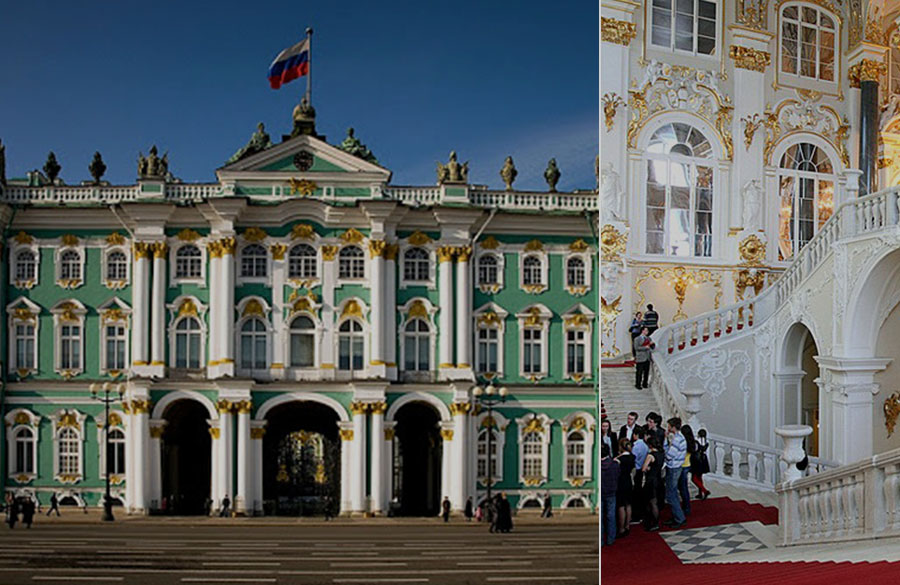Courtesy : www.thoughtco.com
Green baroque architecture
Baroque architecture emerged in England after the Great Fire of London in 1666. English architect Sir Christopher Wren (1632-1723) had met the older Italian Baroque master architect Gianlorenzo Bernini and was prepared to rebuild the city. Wren used restrained Baroque styling when he redesigned London, the best example being the iconic St. Paul’s Cathedral.
In addition to St. Paul’s Cathedral and Castle Howard, The Guardian newspaper suggests these fine examples of English Baroque architecture, Winston Churchill’s family home at Blenheim in Oxfordshire, the Royal Naval College at Greenwich, and Chatsworth House in Derbyshire.
Spanish Baroque
:max_bytes(150000):strip_icc():format(webp)/Baroque-SantiagodeCompostela-451200820-crop-5935f1ec3df78c08ab010fcf.jpg)
Builders in Spain, Mexico, and South America combined Baroque ideas with exuberant sculptures, Moorish details, and extreme contrasts between light and dark. Called Churrigueresque after a Spanish family of sculptors and architects, Spanish Baroque architecture was used through the mid-1700s, and continued to be imitated much later.
Belgian Baroque
:max_bytes(150000):strip_icc():format(webp)/Baroque-Belgium-534929778-5935f7015f9b589eb475ed18.jpg)
The 1621 Saint Carolus Borromeus church in Antwerp, Belgium was built by the Jesuits to attract people to the Catholic church. The original interior artwork, designed to mimic an ornate banquet house, was done by the artist Peter Paul Rubens (1577 to 1640), although much of his art was destroyed by a lightening-induced fire in 1718. The church was contemporary and high-tech for its day; the large painting you see here is attached to a mechanism that allows it to be changed as easily as a screen saver on a computer. A nearby Radisson hotel promotes the iconic church as a must-see neighbor.
Architectural historian Talbot Hamlin might agree with the Radisson; it’s a good idea to see Baroque architecture in person. “Baroque buildings more than any others,” he writes, “suffer in photographs.” Hamlin explains that a static photo can’t capture the movement and interests of the Baroque architect:
“…the relations between façade and court and room, in the building up of artistic experiences in time as one approaches a building, enters it, goes through its great open spaces. At its best it thereby achieves a kind of symphonic quality, building always by means of carefully calculated curves, by strong contrasts of light and dark, of big and little, of simple and complicated, a flow, an emotion, which finally reaches some definite climax…the building is designed with all its parts so interrelated that the static unit often seems complicated, bizarre, or meaningless….”
Austrian Baroque
:max_bytes(150000):strip_icc():format(webp)/Baroque-PalaisTrautson-543497553-crop-5935f9355f9b589eb4795072.jpg)
This 1716 palace designed by Austrian architect Johann Bernhard Fischer von Erlach (1656–1723) for the first Prince of Trautson stands as one of the many stately Baroque palaces in Vienna, Austria. Palais Trautson displays many of the high Renaissance architectural features yet look at the ornamentation and gold highlights. Restrained Baroque is enhanced Renaissance
German Baroque
:max_bytes(150000):strip_icc():format(webp)/Baroque-Moritzburg-534525594-crop-5936cc8d3df78c08abf80c95.jpg)
Like the Palace of Versailles in France, Moritzburg Castle in Germany started off as a hunting lodge and has a complicated and turbulent history. In 1723, Augustus the Strong of Saxony and Poland expanded and remodeled the property to what today is called Saxon Baroque. The area is also known for a type of delicately sculpted china called Meissen porcelain.
In Germany, Austria, Eastern Europe, and Russia, Baroque ideas were often applied with a lighter touch. Pale colors and curving shell shapes gave buildings the delicate appearance of a frosted cake. The term Rococo was used to describe these softer versions of the Baroque style. Perhaps the ultimate in German Bavarian Rococo is the 1754 Pilgrimage Church of Wies designed and built by Dominikus Zimmermann.
“The lively colours of the paintings bring out the sculpted detail and, in the upper areas, the frescoes and stuccowork interpenetrate to produce a light and living decor of unprecedented richness and refinement,” states the UNESCO World Heritage site about the Pilgrimage Church. “The ceilings painted in trompe-l’œil appear to open to an iridescent sky, across which, angels fly, contributing to the overall lightness of the church as a whole.”
So how does Rococo differ from Baroque?
“The characteristics of baroque,” says Fowler’s Dictionary of Modern English Usage, “are grandeur, pomposity, and weight; those of rococo are inconsequence, grace, and lightness. Baroque aims at astounding, rococo at amusing.”
Sources
- Architecture Through the Ages by Talbot Hamlin, Putnam, Revised 1953, pp. 424-425; Church of the Gesu Photo by Print Collector/Hulton Archive/Getty Images (cropped)
- Architecture Through the Ages by Talbot Hamlin, Putnam, Revised 1953, pp. 425-426
- Baroque architecture in Britain: examples from the era by Phil Daoust, The Guardian, September 9, 2011 [accessed June 6, 2017]
- Pilgrimage Church of Wies photo by Imagno/Hulton Archive/Getty Images (cropped)
- A Dictionary of Modern English Usage, Second Edition, by H.W. Fowler, revised by Sir Ernest Gowers, Oxford University Press, 1965, p. 49
- Pilgrimage Church of Wies, UNESCO World Heritage Centre [accessed June 5, 2017]
Cite this Article



